Bachmann vs. Pawlenty: How do Same-State Same Party Presidential Rivals Fare?
More than two-dozen pairs of candidates from the same state have sought the same major party nomination in the post-Civil War era; 15 have won the nomination and nine the presidency
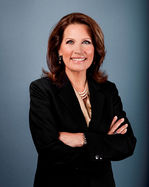
Should Bachmann enter the race, the recent narrative among political commentators and journalists may change from the oft-questioned “Is there room for Michele Bachmann and Sarah Palin?” to “Is there room for two Minnesotans?”
Although a Bachmann-Pawlenty GOP nomination battle might have more juice because they have both been high profile political officeholders in recent years, there is, of course, already one pair of same-state candidates vying for the Republican nomination: former U.S. House Speaker Newt Gingrich and businessman Herman Cain from Georgia.
But the truth is same-state candidate battles for a party’s presidential nomination have not been so unusual in the annals of American political history – both before, during, and after the onset of today’s primary- and caucus-driven system.
In fact, a Smart Politics study finds that more than two-dozen pairs of candidates from the same state have sought the same major party nomination in the post-Civil War era, with half of these yielding the party’s eventual presidential nominee.
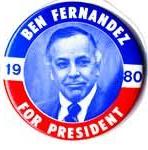
Fernandez, the first Hispanic to run for the presidency, had previously founded the Republican National Hispanic Council and was a Special Ambassador to Paraguay under President Nixon.
Reagan, of course, had a more high profile same-state GOP nomination battle in 1968 against fellow Californian and eventual general election winner Richard Nixon, when he sought the first of his four presidential bids.
The 1968 election cycle was host to another pair of same-state candidates seeking the Democratic Party’s nomination in the first of back-to-back cycles: Minnesota’s Hubert Humphrey and Eugene McCarthy.
In 1968, then Vice President Humphrey was not a serious player in the presidential primaries, in which McCarthy ended up with the most popular votes (edging Robert Kennedy) by the end of the primary season and winning several states such as Wisconsin, Pennsylvania, and Massachusetts.
Humphrey – the party establishment candidate – eventually won the nomination, with McCarthy taking home the second most delegates on the final convention ballot.
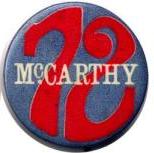
McCarthy’s 1972 campaign, meanwhile, was not as successful as in 1968 and the Minnesota Senator dropped out early in the primary season.
In addition to the five scenarios listed above, the last 40 years have brought another five pairs of same-state presidential hopefuls vying for their party’s nomination, although none of the candidates were successful in doing so:
· In 1996, from California: Republican Governor Pete Wilson and GOP U.S. Representative Bob Dornan.
· In 1992, from California: former Democratic Governor Jerry Brown and former Irvine Mayor Larry Agran.
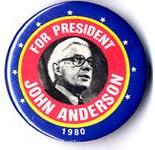
Anderson eventually ran an independent campaign with former Democratic Wisconsin Governor Patrick Lucey and won over six percent of the general election vote.
· In 1980, from Texas: former Republican Party Chair and U.S. Representative George H.W. Bush and former Governor John Connally.
· In 1972, from New York: Democratic U.S. Representative Shirley Chisholm and New York City Mayor John Lindsay.
1916 through 1948
Prior to the modern political era, but after the birth of the first state primary in 1912 (North Dakota), there were several instances of candidates from the same state seeking their party’s presidential nod – often in party convention scrambles.
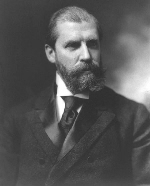
All three candidates received substantial support in the first round of convention balloting, with Hughes leading with a plurality until gaining a majority on the final ballot.
In 1920, two-term Democratic incumbent Woodrow Wilson, due in part to declining health, failed in his attempt to win a third straight party nomination, as did fellow New Jerseyan and Governor Edward Edwards.
New Yorker Franklin Roosevelt had to fight off fellow home state candidates in 1932 and 1936 with Al Smith (the 1928 Democratic nominee) and former U.S. Assistant Secretary of War (under Wilson) Henry Breckinridge respectively.
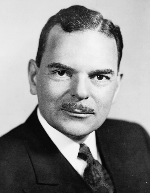
Wilkie won the nomination in 1940 while Dewey prevailed in 1944 (and 1948).
In 1944 a pair of Illinois residents also sought the Republican nomination: U.S. Representative Everett Dirksen and businessman Riley Bender (who only appeared on the Illinois ballot).
Bender tried again for the GOP nomination in 1948 along with Illinois ‘favorite son’ candidate Dwight Green – the outgoing governor of Illinois.
1868 to 1908
After the Civil War, but before the onset of state primaries in the political party nomination process, many candidates landed their party’s nomination despite competition from other candidates from their same state including:
· In 1880, from Pennsylvania: Democratic nominee and U.S. Major General Winfield Hancock and U.S. Representative Samuel Randall.
· In 1880, from Ohio: victorious Republican U.S. Representative James Garfield and U.S. Treasury Secretary John Sherman.
· In 1888, from Indiana: victorious Republican and former U.S. Senator Benjamin Harrison and former U.S. Treasury Secretary Walter Gresham.
· In 1892, from New York: victorious former Democratic President Grover Cleveland and U.S. Senator David Hill.
· In 1904, from New York: New York Court of Appeals Judge and Democratic nominee Alton Parker and U.S. Representative and publisher William Randolph Hearst.
· In 1908, from Ohio: victorious U.S. Secretary of War William Howard Taft and U.S. Senator Joseph Foraker.
Two additional pairs of candidates during this era unable to secure their party’s nomination were:
· In 1868, from Pennsylvania: Democratic U.S. Major General Winfield Hancock and U.S. Representative Asa Packer.
· In 1880, from Ohio: Democratic U.S. Senator Allen Thurman and U.S. Representative Henry Payne.
Overall, since 1868, 15 candidates have secured their party’s presidential nomination despite campaigns – either in primaries or on the convention floor – by other candidates from their home state.
On nine occasions these nominees went on to win the general election: Garfield (1880), Harrison (1888), Cleveland (1892), Taft (1908), FDR (1932, 1936), Nixon (1968), and Reagan (1980, 1984).
Follow Smart Politics on Twitter.

Nixon edged out Nelson Rockefeller in 1968 to become one of the nominees who defeated a “same-state” contender. Too, he beat back an intrastate challenge in 1972, that time from CA Representative “Pete” McCloskey, marking one of TEN occasions where these nominees went on to victory, albeit a pyhhric one in said case (“37” was NY resident in ’68 but again a CA resident by time of his ’72 re-election).